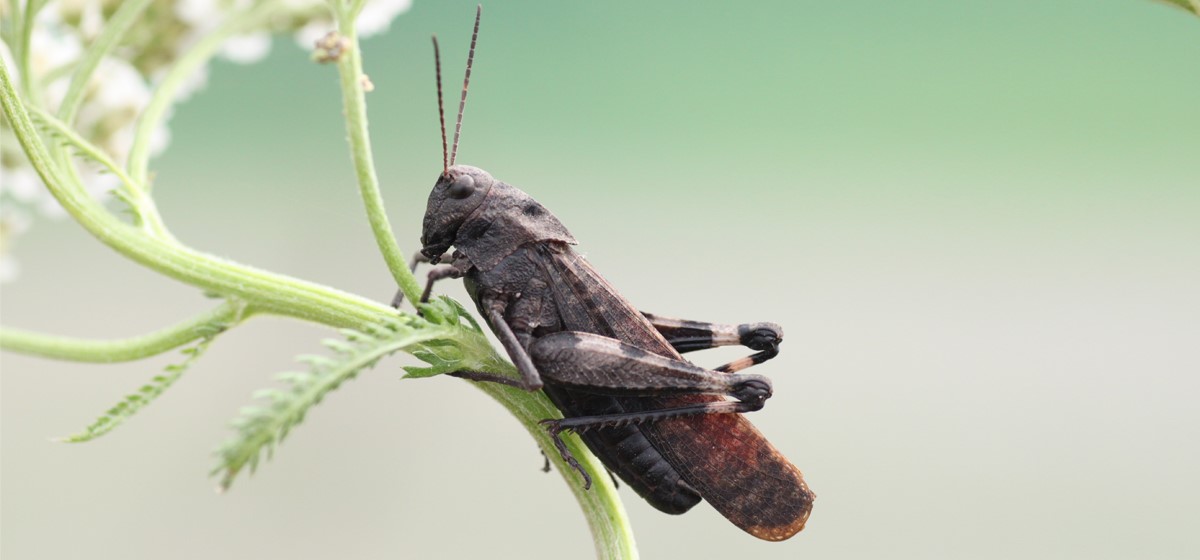Rattle grasshopper conservation
The rattle grasshopper (Psophus stridulus) is Sweden's most beautiful grasshopper, and one of the most endangered. The species was previously common in large parts of southern Sweden, but during the last 100 years the number of premises where the species lives has decreased sharply and the species is now threatened with extinction.
The rattle grasshopper thrives in sunny and dry soils, preferably on southern slopes and it is crucial for the species that the soil is maintained through grazing. When agriculture and forestry in Sweden in the 1950s were transformed to become more large-scale and industrial, the open landscapes and meadows that are vital to the rattle grasshopper disappeared. The consequences of this are that the species has decreased by as much as 70% and it is now listed as critically endangered on the Swedish Red List.
What we do at Nordens Ark
On behalf of the County Administrative Board of Södermanland, which is also the national coordinator for the action program for the species, a breeding project is started where grasshoppers born on Nordens Ark will eventually be released into the wild. The project is carried out within the framework of action programs for endangered species.
The first step in the breeding project is to develop an effective breeding method that can then be used to produce a large number of rattle grasshoppers for future release in Sweden. The breeding work was started in 2021 when the first breeding individuals were collected from wild (without harming the existing population) and taken to the newly built breeding facility at Nordens Ark. In the breeding facility, the rattle grasshoppers are given the opportunity to mate and lay eggs in a suitable substrate. The reproduction of the rattle grasshoppers takes place during July-September. After the eggs have been laid in the ground, they then lie dormant for a full two years before it is time for them to hatch into a 3-4 mm long nymph in May-June. The nymphs look like the adult grasshoppers, except that the wings are not fully developed. The nymph sheds its skin four times and in mid-July it is finally a fully developed grasshopper.
The work of developing a breeding method for the rattle grasshopper will continue in the coming years and at the same time we will work to build a self-sufficient breeding population that will annually be able to contribute with individuals that can be released into suitable environments within the species' range. In parallel with this work, the County Administrative Board will continue its work to protect and restore meadows to the grasshoppers.
News from the project – January 2025
In 2025, 1,797 rattle grasshoppers were released in Södermanland County. The releases took place both at existing sites and at newly restored ones that are expected to help connect the area’s current populations with each other.
Before some of this year’s grasshoppers were released, the area was surveyed for wild-born rattle grasshoppers that would be offspring from the 2023 release. After only a few minutes of searching, an adult male was spotted. Finding wild-born individuals in the field is highly encouraging. It shows that earlier releases have been successful and that the efforts to re-establish the species in the landscape are working and producing results.

Release of rattle grasshoppers. Photo: Emma Nygren
In collaboration with
The County Administrative Board of Södermanland



